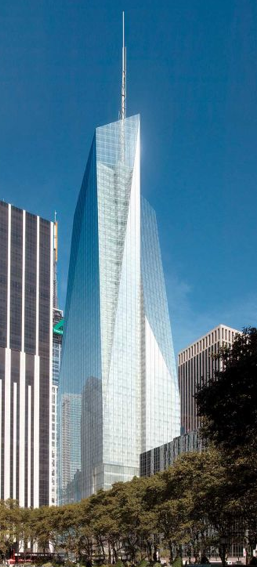Do green buildings lower health care costs?


I recently attended a panel called A Green Building is a Healthier One at the National Building Museum in Washington. Two of the panelists talked about Manhattan’s new Bank of America Tower at One Bryant Park, which is expected to become the country’s first Platinum LEED skyscraper. The discussion focused on whether a green building can, in fact, improve the health of those working inside and in turn lower health care costs for the employer.
The 51-story tower not only uses significantly less energy and water than a conventional high-rise, but there are some features that specifically promote health, such as a system that filters out 95 percent of the particles in the air that are drawn into the building. Another benefit of the air ventilation system is that it’s below the floor, which means no air beating down on workers (and dousing them with allergens and germs). Also, each person can control his or her own air flow, which adds to satisfaction and comfort.
Now, Carnegie Mellon University is working with Bank of America to study the employees who have moved into the building and to compare health care costs between those at the old building and those at the new one.
“We’re going to look at visits to the doctor, prescriptions, possibly absenteeism,” said Lisa Shpritz, Bank of America’s director of Corporate Workplace Environmental Risk and Sustainability. “One of the reasons why this study was important to us is that we believe that the workplace can be a competitive advantage for an employer.” Shpritz said the study will not only look at doctor visits but will also query employees about symptoms, because so many Americans work through an illness to avoid missing a day at the office. But if they’re going to work and they’re not healthy, she said, “their productivity won’t be that great.”
Professor Vivian Loftness, at Carnegie Mellon School of Architecture, also sat on the panel. She is involved with the Bank of America study and said the surveys are a useful way to gather information about what’s making us sick. Here are a few building factors that she said affect our health:
1. Visible mold: “There is a direct correlation between mold and asthma/allergies.”
2. Fresh air: “When you increase outside air (through mechanical systems or through open windows), you improve respiratory health.”
3. Views of nature: “Access to nature is something that we as designers should aspire to.”
4. Access to daylight: “One of my life’s goals is to make windowless and basement offices illegal. Some hospital studies are showing very clearly that patients with southeastern views (getting direct morning sun) have shorter stays than patients facing in other directions.”
Loftness said she’d like to see a government mandate for natural light in office buildings. “We’ve got a problem as a nation,” she said. “We invest far less in our physical infrastructure than our desktop technology and our cars.”
She said buildings can have a significant impact on mental as well as physical health, but it’s critical to document the connection through studies.
“I believe green buildings are as much as about health as they are about energy,” she said. “The most urgent thing for me is to unseal our buildings. If I could convince all of you that coasting with free environmental resources—passive solar heat, natural light and only turning on systems when it’s too hot, too cold, too dark… If we can coast, I think we’d find a dramatic reduction in our energy and carbon footprint, but also a drastic improvement in our health.”
This post was originally published on Smartplanet.com